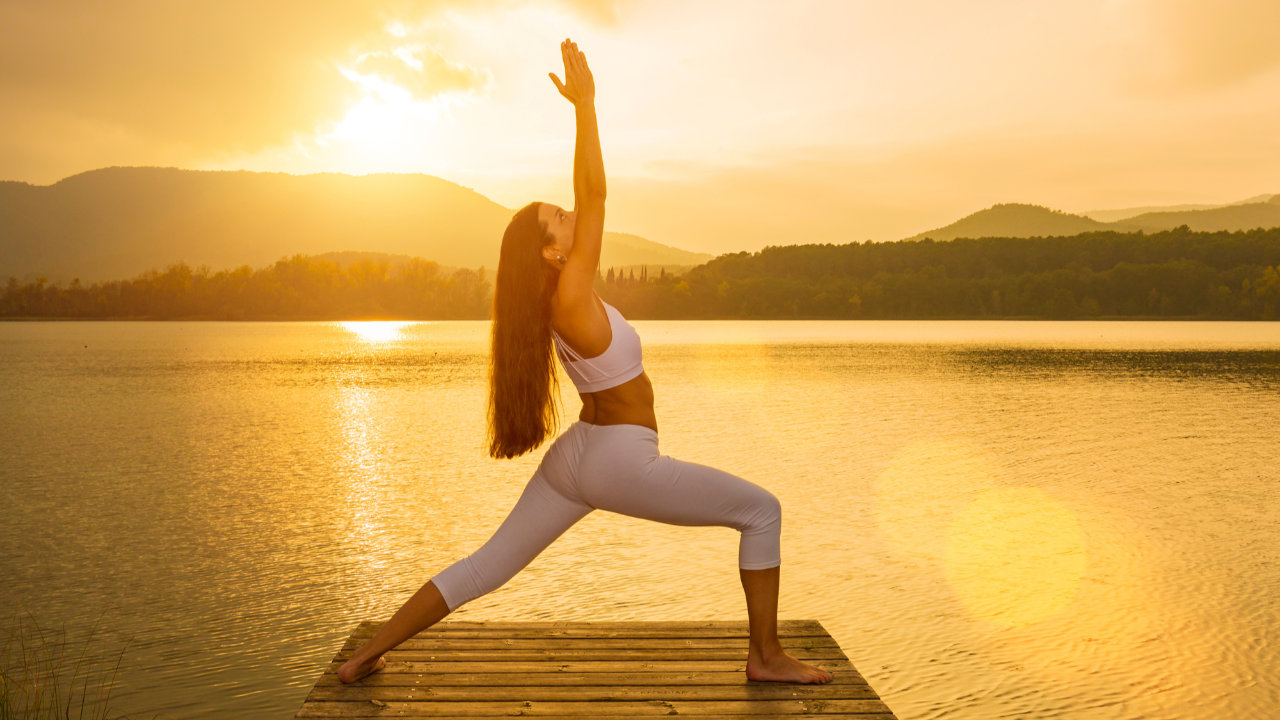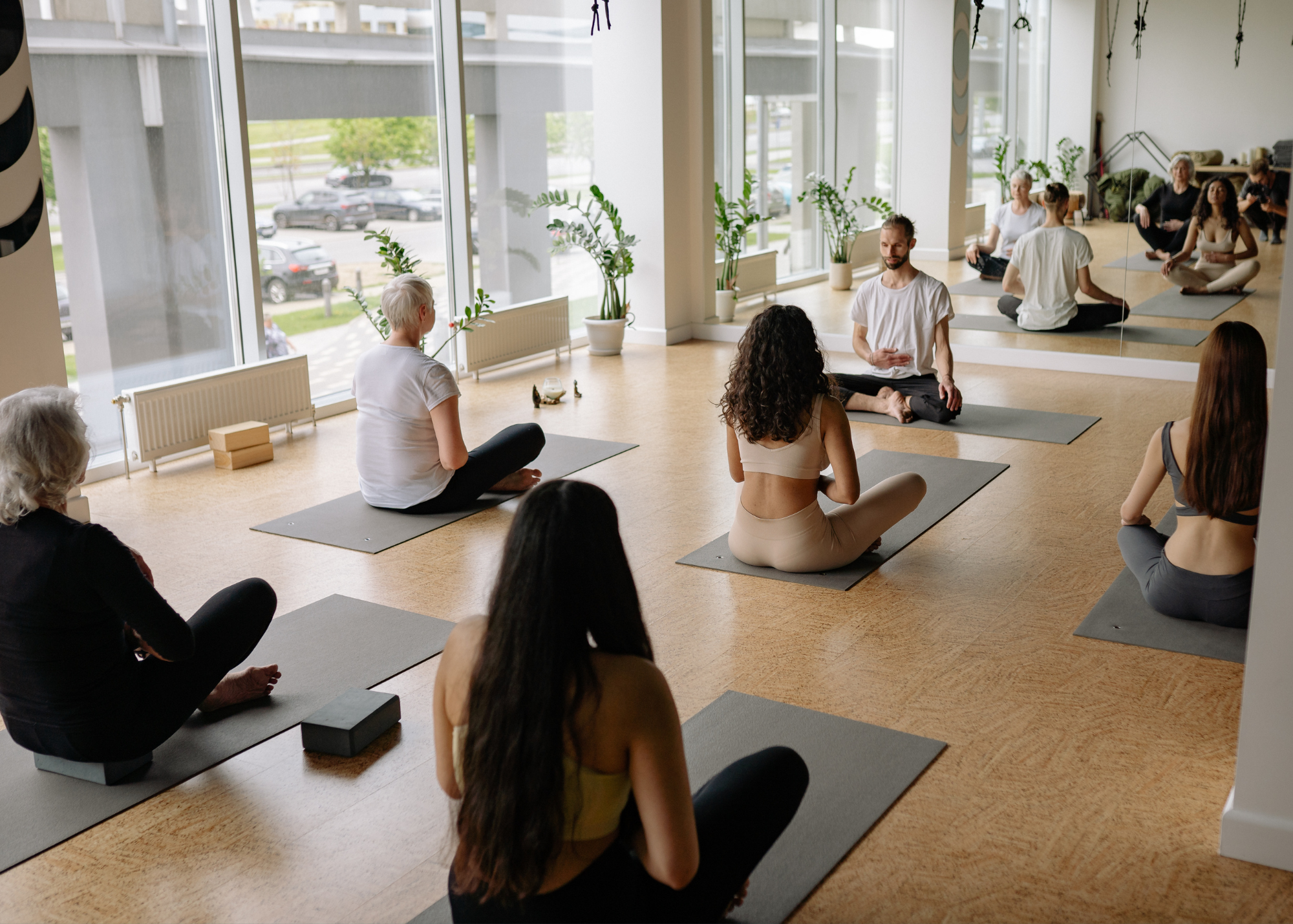"From Microphone to Mindfulness: How Yoga and Meditation can Elevate Your Voice"
Feb 24, 2025
Why should a voice artist always include elements of yoga and meditation in their daily practice?
I'm just back in the UK after a wonderful stay in the beautiful island of Mallorca, where I completed my Yin Yoga Teacher Training with the amazing Maria from YogaMarisol, and I find myself reflecting on how holistic practices such as sound healing, yoga, and meditation have profoundly influenced and transformed my approach to the art of voice. These practices have not only enhanced my physical, emotional, and mental balance but have also elevated my human and artistic awareness, ultimately supporting me invaluably in the manifestation of a sustainable, healthy, and highly productive career.
Sound healing, which is particularly dear to me, deserves its own dedicated articles.
Today, however, I would love to share some reflections on the link between yoga, meditation and voice work. My hope is to inspire a lifestyle that allows you to manifest your highest potential as individuals and as talents.
The Voice as Energy
We know that working on the voice cannot be limited to its physical component. It is, instead, a process of channeling and transforming energy—our unique and unrepeatable energy—which allows us to express ourselves in the world as the unique beings we are.
Over the years, we learn techniques aimed at achieving performance excellence. We attend courses and follow methods that teach us to produce a sound exactly as required or as we wish to perceive it. These tools enrich us and enable us to progress professionally. However, if we intend to build a sustainable, balanced, and long-lasting career, we must recognize that our voice, before being a physical instrument, is our soul unique frequency. It is the meeting point where our physical body, spiritual essence, and mind converge to bring forth the message of our artistic and personal identity.
This is both a simple and complex concept that would require multiple articles and we'll dive into it in future blog posts. For now let's just bring our awareness back to the topic, as this starting point will help you better understand why yoga and meditation should be part of every voice professional’s daily routine as you read through the following lines.

So Why Should Voice Professionals Practice Yoga and Meditation?
Countless benefits arise from yoga and meditation for the voice, but here are my top ten reasons amongst which you'll find benefits for the Physical Body and Vocal Anatomy as well as benefits for the mind and the soul.
1. Connecting with Your Authentic Voice
Yoga, meditation, and sound healing create a judgment-free space where you can explore your voice in its purest form. These practices bring the focus back to your essence and to your higher self allowing you to reconnect with your authentic sound and helping you strip away societal conditioning and self-imposed limitations. This process fosters emotional intelligence, encouraging you to embrace your individuality and move beyond competition and comparison. When you free your voice and connect to your authentic voice, you cultivate greater confidence and expressiveness in both speech and singing. Ultimately, this deeper connection with your voice enhances not only your artistic performance but also your ability to communicate with sincerity and impact.
2. Staying Present
Yoga and meditation train us to be fully present—an invaluable skill for voice work and performance. When you're at the microphone, your energy should convey: I am here, I am fully present, and I am ready to deliver this message through my voice. However, distractions, anxiety, or overthinking can pull us away from this state, affecting vocal delivery. If you don’t always feel this way, it may be time to incorporate yoga and meditation into your routine! These practices help quiet the mind, regulate emotions, and create a strong foundation for a grounded and authentic vocal presence.
3. Posture and Spinal Alignment
Proper posture is fundamental for voice work. Yoga helps align the spine, improving the stability of the head, neck, and torso—key areas involved in vocal production. Misalignment in the spine can lead to vocal strain, as compensatory muscle tensions affect breath control and sound projection. Practices like Tadasana (Mountain Pose) and Bhujangasana (Cobra Pose) encourage an open chest, relaxed shoulders, and a stable, well-supported posture. By integrating yoga into your daily routine, you develop body awareness, ensuring that your posture supports, rather than hinders, your vocal performance.
4. Breath Control and Muscle Engagement
Yogic breathing (Pranayama) may differ from diaphragmatic breathing used by singers and actors, but it teaches a deeper awareness of the respiratory system and how to control it. Proper breath control is essential for vocal performance, helping to sustain phrases, modulate volume, and reduce vocal fatigue. Controlling breath sounds is crucial for voice-over artists—it’s every audio engineer’s nightmare to edit out unwanted breaths! Pranayama exercises such as Nadi Shodhana (alternate nostril breathing) or Kapalabhati (breath of fire) can enhance lung capacity and breath efficiency. These practices not only improve vocal performance but also support overall well-being by reducing stress and promoting relaxation. Have you ever tried a Pranayama class?
5. Maintaining Youthful Tendons and Connective Tissues, Especially Through Yin Yoga
Keeping your fascia healthy is vital for longevity in vocal performance as it impacts flexibility, muscle function, and circulation. Yin Yoga targets the fascia, helping to maintain its elasticity, which directly impacts vocal resonance and breath support.This slower practice also allows connective tissues to hydrate and release tension, promoting greater vocal ease. Yin yoga is an extremely valuable tool we have as voice users and it can be paired with Pranayama or other practices such as Nidra (when practiced in the evening). As a voice professional I particularly love Yin and that's why I decided to also become a Yin Yoga teacher, I just I love how Yin has deepened my connection with my body and voice, allowing me to share these benefits with others. Have you ever tried a Yin Yoga class?
6. Balancing the Autonomic Nervous System
Performing is not a natural activity for the body, and many of us experience symptoms of stress before or during performances—racing heart, sweaty palms, dry mouth, tension in the larynx, or even panic. These are signs of an overactive sympathetic nervous system, also known as the “fight-or-flight” response. Yoga and meditation teach us to observe and regulate these involuntary reactions, helping us separate our analytical mind from our nervous system’s automatic responses. Through slow breathing, mindful movement, and relaxation techniques, we can activate the parasympathetic nervous system—the body’s “rest-and-digest” mode. This self-awareness allows us to manage performance anxiety effectively, making our voice steadier, more resonant, and expressive even under pressure.
7. Understanding the Function of Resonators and Amplifying Vocal Frequencies
Chanting, sound healing, and certain yoga practices teach us to fully utilize our resonators, helping us produce a richer and more amplified voice. The body acts as a natural amplifier, and different vocal techniques can enhance resonance in the chest, throat, nasal cavity, and skull. Humming, toning, and overtone singing are powerful ways to activate and refine these resonators. This unique resonance is what sets us apart from AI-generated voices and makes us irreplaceable as voice artists. By experimenting with vocal vibrations in different areas of the body, we can discover new depths of expression and power in our voice. Sound healing practices, such as working with Tibetan singing bowls or overtone chanting, further enhance this awareness. This topic is particularly dear to me so watch this blog as more articles are in the making.
8. Oxygenation, Leading to Better Stamina and Presence
Practices like Vinyasa Yoga and Pranayama improve oxygenation, resulting in increased energy, enhanced stage presence, and even healthier-looking skin. Proper oxygenation supports endurance, allowing voice professionals to sustain long recording sessions or performances without fatigue. Improved circulation also benefits cognitive function, helping with mental clarity and focus when delivering lines or engaging with an audience. Additionally, oxygen-rich blood enhances vocal cord function, preventing strain and maintaining vocal health. Whether you’re on stage, in a recording booth, or speaking in front of an audience, increased oxygenation keeps your voice steady, powerful, and vibrant.
9. Body Awareness and Isolation of Individual Parts
Yoga allows us to perceive the body as a whole while also developing the ability to isolate and control specific areas—an essential skill for vocal artists. Many voice professionals unconsciously hold tension in their jaw, tongue, shoulders, or diaphragm, limiting their vocal flexibility. Through practicing yoga and through breathwork, we learn to release unnecessary tension targeting specific areas while engaging the right muscles for vocal support. We train the body to respond with precision and we learn how to engage its parts individually, from the largest parts to the smallest. An invaluable ability to have when targeting articulation, vocal agility and many other aspects of perfomance.
10. Tension Release and Muscle Relaxation
Tension in the body translates directly into a strained voice, affecting tone, resonance, and vocal endurance. Yoga helps release physical and emotional tension, leading to a more relaxed, resonant, and expressive sound. Stretches that target the neck, shoulders, and jaw—such as gentle neck rolls, supported fish pose, or lion’s breath—help free up the vocal mechanism. Additionally, deep relaxation practices like Yoga Nidra and restorative yoga support a state of effortless vocal production. When the body is relaxed, the voice flows naturally, allowing for a richer and more authentic expression. Whether preparing for a performance or recovering after vocal exertion, integrating these relaxation techniques can make a significant difference in vocal longevity and ease.

The above ten points highlight some of the primary reasons why yoga and meditation are immensely beneficial for performers and should be an integral part of their routine. There is of course so much more to this, but I hope to have lighted the spark in you to motivate you to give a try to these practices in case you haven't done so yet.
Furthermore, Vocal training can be even more powerful when paired with yoga practice in the same training session—but that’s a topic for another article! Yoga and voice work are deeply interconnected, and just as yoga practitioners can benefit from integrating vocal exercises into their practice, voice artists can gain invaluable advantages from yoga and meditation.
By embracing these disciplines, we can cultivate a more balanced, sustainable, and fulfilling artistic career—one where our voice is not just heard, but truly felt!
I hope you enjoyed this read and I look forward to reading your comments on this.
SUBSCRIBE TO STAY IN THE LOOP
Follow Vagavoice's journey across the world and take your career to the next level as a thriving talent!
We hate SPAM. We will never sell your information, for any reason.

